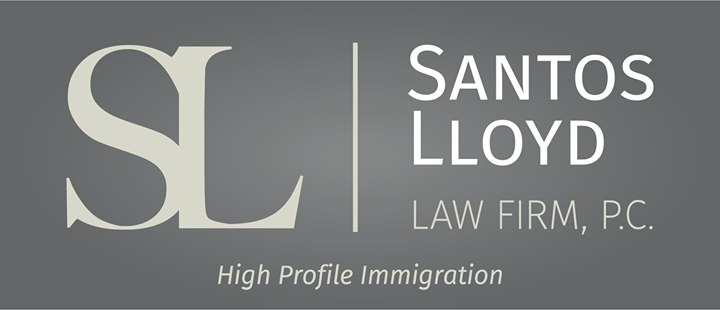Como obter um visto EB-3? Ou o que é um visto EB-3?
Santos Lloyd Law Team • September 28, 2023
Click here to read this article in English
Existem diversos tipos de vistos que permitem que você venha para os Estados Unidos e trabalhe. Vistos baseados em emprego lhe darão a oportunidade de viver e trabalhar nos EUA. Sua educação, habilidades e experiência são alguns dos fatores usados para determinar quem é elegível para um visto baseado em emprego. Um visto "EB" para o qual muitas pessoas se qualificam é o visto EB-3.
O Visto EB-3 é um visto baseado em emprego que lhe proporcionará um Green Card, ou seja, a capacidade de viver e trabalhar permanentemente nos Estados Unidos. Existem três categorias distintas de EB-3, todas elas precisando passar pelo processo de certificação de trabalho, e é necessário ter uma oferta de emprego permanente em tempo integral. As três categorias são:
Trabalhador Qualificado EB-3
- Você deve comprovar que possui pelo menos dois anos de experiência profissional ou treinamento e executar um trabalho para o qual não há trabalhadores qualificados disponíveis nos EUA.
Profissional EB-3
- Você deve comprovar que possui um diploma de bacharel dos EUA ou um diploma equivalente na área de trabalho e deve realizar um trabalho para o qual não há trabalhadores qualificados disponíveis nos EUA.
Trabalhador Não Qualificado EB-3
- Você deve comprovar ser capaz de executar trabalho não qualificado que não seja temporário (ou sazonal), para o qual não há trabalhadores qualificados disponíveis nos EUA.
Como mencionado, você precisará de uma oferta de emprego em tempo integral, e seu empregador terá que obter um PERM/Certificação de Trabalho do Departamento de Trabalho dos EUA. Após ser aprovado nesta primeira etapa, que geralmente leva cerca de um ano, os empregadores devem apresentar o Formulário I-140 ao USCIS, o que leva, em média, seis meses.
Finalmente, quando o USCIS aprova o I-140, você, o estrangeiro, pode solicitar um visto de imigrante ou ajuste de status e obter o seu Green Card, o que levará mais seis meses, totalizando uma média de dois anos para a conclusão do processo EB-3.
Se você tiver alguma dúvida, por favor, agende uma consulta com um de nossos advogados especializados, e ficaremos felizes em ajudar.
Este blog não se destina a fornecer aconselhamento jurídico e nada aqui deve ser interpretado como estabelecimento de um relacionamento advogado-cliente. Por favor, agende uma consulta com um advogado de imigração antes de agir com base em qualquer informação lida aqui.
Similar Posts

As an immigration law firm, we regularly assist highly skilled professionals working in the U.S. on temporary work visas such as H-1B who are seeking a path to permanent residency. For many of these individuals, the EB-2 and EB-3 employment-based green card categories are the most pursued—and frequently misunderstood—routes . While both are viable pathways to permanent residency, they differ in meaningful ways that can significantly impact the timing, eligibility, and overall strategy of your case. The EB-2 category is intended for individuals who either hold an advanced degree or demonstrate exceptional ability in their field . Most applicants qualify by having a master’s degree (or higher), or a bachelor’s degree accompanied by at least five years of progressive experience in their profession. There is also a subcategory within EB-2 known as the National Interest Waiver (NIW), which allows qualified individuals to self-petition without employer sponsorship if their work substantially benefits the United States. This route is especially relevant for researchers, entrepreneurs, and professionals in high national interest or mission-critical fields. In contrast, the EB-3 category includes professionals with a bachelor’s degree as well as skilled workers with at least two years of training or experience . While the educational threshold for EB-3 may appear less rigorous, the process itself is equally structured. One key distinction between EB-2 and EB-3 lies in the requirements of the job being offered, not just the applicant’s own credentials. For example, if a position requires only a bachelor’s degree, even a highly qualified candidate with a master’s degree may still fall under EB-3. Regardless of which category applies, most employment-based green card cases begin with the PERM labor certification process . This is a formal procedure overseen by the U.S. Department of Labor, in which the employer must test the labor market and demonstrate that there are no able, willing, qualified, and available U.S. workers for the position. The employer must also agree to pay the prevailing wage as determined by the Department of Labor. This step is both mandatory and highly detail-sensitive; inaccuracies in the job description, recruitment steps, or wage determination can lead to significant delays or even denials. Once PERM certification is approved, the employer files Form I-140 , the Immigrant Petition for Alien Worker. This petition confirms that the employee meets the requirements for the offered position under either EB-2 or EB-3, and that the employer is financially capable of providing the job as described. If the employee’s priority date—which is based on the date the PERM was filed—is current according to the Department of State’s Visa Bulletin, the individual may then file Form I-485 to adjust their status to lawful permanent resident. One of the more nuanced aspects of this process involves understanding how priority dates and visa backlogs affect the timeline. For applicants from countries with high demand, such as India or China, significant delays are common—particularly under EB-2. Paradoxically, there are times when the EB-3 category moves faster, prompting some applicants to file a second I-140 under EB-3 while retaining the original priority date. This strategy can be effective but requires careful legal planning to ensure it’s done correctly. Another strategic factor is portability. If your I-485 application has been pending for at least 180 days and your I-140 has been approved, you may be eligible to change employers under the AC21 portability provisions, so long as the new job is in the same or a similar occupational classification. This flexibility can be critical for employees who experience job changes or promotions during the often lengthy green card process. Ultimately, the choice between EB-2 and EB-3 isn’t about prestige —it’s about aligning your qualifications, the job requirements, and your immigration history with current legal standards and market conditions. The right strategy depends not only on your education and experience, but also on your long-term career goals and country of origin. At our firm, we work closely with both employers and employees to develop individualized immigration strategies that streamline the process and avoid unnecessary setbacks. Whether you're a corporate professional evaluating your green card options or an employer preparing to sponsor a key team member, we offer the insight and experience to move your case forward with confidence.

There are several types of visas that allow you to come to the United States and work. Employment-based visas will give you the opportunity to live and work in the U.S. Your education, skills, and experience are some of the things used to determine who is eligible for an employment-based visa. One “EB” visa many people qualify for is an EB-3 visa.

Once you have connected with a college program, have been admitted to the school, and deemed eligible to compete athletically, you will need to secure an F-1 student visa in order to actually attend your new college and begin your time as a student athlete. The first step in the visa process is to receive your Form I-2

For many talented athletes around the world, U.S. college athletics represent a remarkable opportunity to combine elite athletic competition with higher education. In sports such as basketball, soccer, track and field, and tennis, among others, hundreds of colleges and universities across the United States offer struct

Under the new regulation, if a person filed or files Form I-589, Application for Asylum and for Withholding of Removal after October 1, 2024, and the application remains pending with USCIS for 365 days, the applicant must pay an Annual Asylum Fee (AAF) on the one-year anniversary of his or her filing date.




